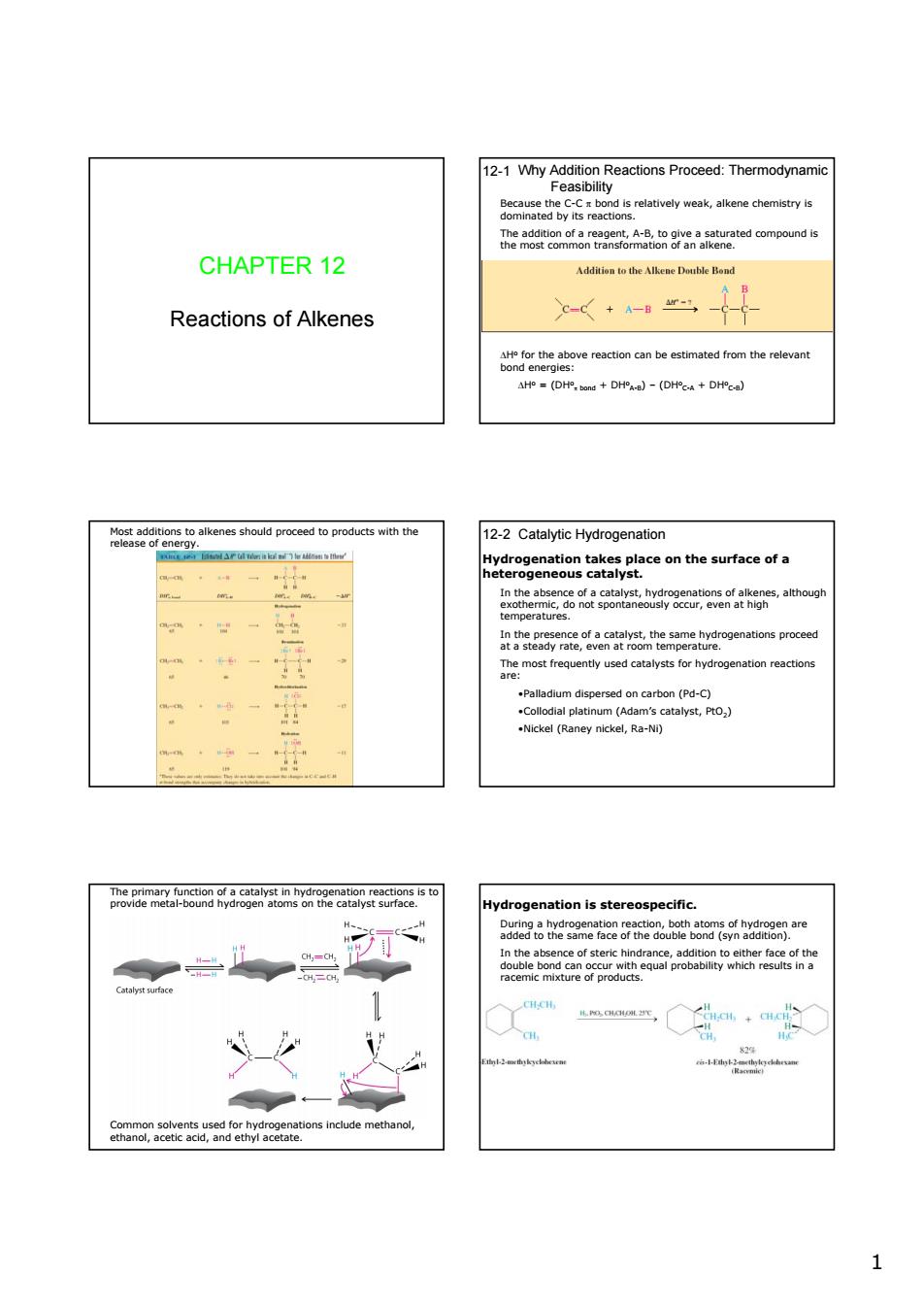正在加载图片...

12-1 Why Addition Reactions Proceed:Thermodynamic CHAPTER 12 A材o。e the Alkene Deahie Bepd Reactions of Alkenes ortheabvebe estmated from the relev H(H.+DHa)(+DHca) 12-2 Catalytic Hydrogenation oeai86686at6ySP8eagem5ber5,ahou 3tme56rnfoaSRtheniehrdreoenatoasproced The most frequently used catalysts for hydrogenation reaction (Raneyk,Ra-i) tion is ste 0aiatdeseoat52natontatareathdeanar 二 11 CHAPTER 12 Reactions of Alkenes Why Addition Reactions Proceed: Thermodynamic Feasibility 12-1 Because the C-C π bond is relatively weak, alkene chemistry is dominated by its reactions. The addition of a reagent, A-B, to give a saturated compound is the most common transformation of an alkene. ΔHo for the above reaction can be estimated from the relevant bond energies: ΔHo = (DHo π bond + DHo A-B) – (DHo C-A + DHo C-B) Most additions to alkenes should proceed to products with the release of energy. 12-2 Catalytic Hydrogenation Hydrogenation takes place on the surface of a heterogeneous catalyst. In the absence of a catalyst, hydrogenations of alkenes, although exothermic, do not spontaneously occur, even at high temperatures. In the presence of a catalyst, the same hydrogenations proceed at a steady rate, even at room temperature. The most frequently used catalysts for hydrogenation reactions are: •Palladium dispersed on carbon (Pd-C) •Collodial platinum (Adam’s catalyst, PtO2) •Nickel (Raney nickel, Ra-Ni) The primary function of a catalyst in hydrogenation reactions is to provide metal-bound hydrogen atoms on the catalyst surface. Common solvents used for hydrogenations include methanol, ethanol, acetic acid, and ethyl acetate. Hydrogenation is stereospecific. During a hydrogenation reaction, both atoms of hydrogen are added to the same face of the double bond (syn addition). In the absence of steric hindrance, addition to either face of the double bond can occur with equal probability which results in a racemic mixture of products